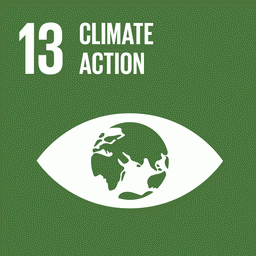By Lays Ushirobira*
When talking about reducing deforestation in the Amazon, it is common to hear the false argument that this would be a barrier to agribusiness, a sector that accounted for 47.6% of Brazilian exports in 2022, according to the Ministry of Agriculture. However, studies and practical examples show that the conservation of the Amazon forest and productivity in the sector not only can, but must walk together.
“Science has been showing that the expansion of agriculture in the Amazon is happening in areas that, in terms of soil and climate, are not good for productivity. If we continue to replace the standing forest – which brings resilience and climatic stability – with agricultural lands, the biophysical system will come to an end,” warned Ludmilla Rattis, researcher at IPAM ( Amazon Environmental Research Institute), in the third episode of Amazoniar. “Our wealth remains in being able to reconcile all these things and there is currently no need to replace areas of native vegetation with agriculture or pasture.”
Data from MapBiomas show that low productivity cattle ranching occupies 73% of the already deforested areas in the Amazon, representing 63 million hectares. However, this scenario can be drastically changed. According to research by Imazon (Instituto do Homem e Meio Ambiente da Amazônia), it is possible to triple the average productivity of cattle raising without deforesting by adopting techniques already existing in the region, such as rotation of pasture and integration between crop, livestock and forest.
Watch the third episode of Amazoniar:
Diversification is more profitable and sustainable
A key point for increasing agricultural and livestock productivity is diversification. “Small properties that focus only on livestock are not profitable, but they become so from the moment the producer invests in product diversification, in some agroforestry system or in raising other small animals,” said Rattis. “Everything that is more diverse is more sustainable and profitable.”
An example of this is family farming. The most recent data from the 2017 Agricultural Census indicated that family farming occupied around 80 million hectares in the country at that time – or 23% of the total area used for farming. Despite this, the segment has a large share in the supply of food consumed nationally: 80% of cassava, 48% of coffee and bananas and 42% of beans. “Family farming produces so much and so well because it is diverse. The small producer knows that diversity brings more profit, more health to the soil, and to nature,” explained the researcher.
It is worth mentioning that diversification does not mean only cultivating forest products. This is one of the discussion points of the bioeconomy. In a seminar promoted last year by the OCAA (Amazon Observatory on Trade and Environment), an initiative of IPAM together with Imazon, Cindes and the Instituto Clima e Sociedade, experts illustrated the situation with the açaí. The fruit, which can be a good alternative for diversification in some places, has been raising concerns in some regions where it is the main source of income. That’s because the need to meet the growing demand has been pressuring for açaí monocultures, in order to increase production and take advantage of international prices.
However, what seems advantageous even to the communities in the region ends up reducing biodiversity, not only by prioritizing one product over other crops, but by collaborating with forest impoverishment as a whole through the cascading effect of a monoculture. For IPAM, a bioeconomy in the Amazon, which takes into account the territorial complexities, cultures and ancestral knowledge of the region, conciliates zero deforestation; diversification of production methods in response to the monoculture system; strengthening of millenary Amazonian practices; and fair distribution of benefits.
About Amazoniar
Amazoniar is an initiative of IPAM to promote a global dialogue about Amazon and its importance for Brazil’s relationships with the world. In the previous cycles, dialogues addressed the commercial relations between Brazil and Europe; the role of indigenous peoples in the region’s sustainable development and their contribution to science and culture; and youth engagement for the forest and its peoples in the 2022 Brazilian elections.
With the proposal of taking the Amazon beyond its borders, Amazoniar has already carried out special projects, such as a photography contest, whose selected photos were exhibited in the streets of Glasgow, in Scotland, during the COP26; a series of short films that composed the exhibition “Fruturos – Amazônia do Amanhã”, at the Museum of Tomorrow, in Rio de Janeiro; as well as a publication with key information to better understand the current Amazon context and some of the possible solutions for its sustainable development.
*Journalist and communication consultant of IPAM

